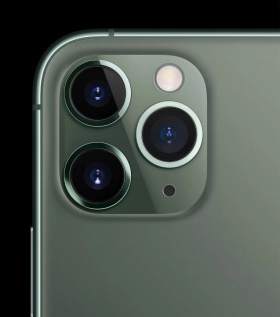Big gear is dead.

First there were fragile, glass Daguerrotypes and messy wet collodion plates. Then along came inflammable and unstable nitrate cellulose base coated with light sensitive chemistry. And finally modern film made its appearance, offering stability and not suitable for use as a fuse in a Molotov cocktail. Kodachrome appeared about that time and after a few tries offered the best combination of fine grain, stability and exceptional color rendering, though the original 12 ASA speed was nothing to write home about.
So Kodak proceeded to invent digital imaging and, being Kodak, decided it would never rival film and went bankrupt as a result. Kodak’s management made the captain of the Titanic look like a winner and even today’s Boeing management looks competent by comparison. A huge technology gain was thrown away and with it tens of thousands of US jobs in Rochester, a company town if there ever was one.
The lead in digital imaging was taken by Sony with its ever better sensors and, really, neither Nikon or Canon could keep up. And while Sony has recently made a bunch of competent – if surpassingly ugly – mirrorless digital cameras, they saw the writing on the wall and devoted their sensor design brains to the next new thing, the cell phone. They dominate the sector today. It’s fitting that one of the few companies whose design chops were admired by Steve Jobs remains a key partner of today’s Apple, now the world’s largest public company.
Steve Jobs and Apple did not invent the cell phone any more than they invented the pocket music player or the desktop computer. Rather, they took what was out there, saw how awful the ergonomics were and designed these devices to appeal to everyman. The results were the iPhone, the iPod and the iMac, the ‘i’ denoting Steve’s interim CEO status after returning to the company he had founded and which had fired him a few years earlier. His design insights remained undimmed but during his absence he learned how to manage a team of hardware and software engineers, his charisma and communication skills attracting the best of the best. Good thing he shucked the ‘interim’ label.
And the iPhone became the transformative electronic device of our time. Everyone wants an iPhone and those poor souls struggling with Android devices offered by the serial thieves at Google and Samsung do so because their time is worth as little as their easily stolen data and, well, they just don’t get it.
I have had two transformative iPhone experiences – in 2007 when I bought iPhone 1 on the day it became available, and this year when I bought the iPhone 11 Pro which will change the photography hardware landscape permanently. All of the big makers will be gone in a few years. The iPhone’s camera is an order of magnitude better, doing things the clumsy SLR offerings can only dream of. The remaining reasons to buy clunky gear are that you need high definition from really long lenses – a couple of guys at Nat Geo – and because showing up at the Vogue studios with an iPhone to snap today’s supermodel just does not earn machismo points. Look at Stanley Kubrick’s ‘2001: A Space Odyssey’ and you will see how that will change. The official snapper on the moon space station is using a camera scarcely larger than the iPhone to document the plotting of the day. Next generation’s David Baileys will too.
Sure some cranks will stick with DSLRs, just as others adhere to film and LPs, tediously proclaiming their purported superiority. But that’s not meaningful market share by some 5 orders of magnitude. As for my Nikons and Panasonics, they have all been sold along with the raft of lenses and attachments I was increasingly reluctant to lug about. They will shortly be nothing more than paperweights.
Surveying the pace of change in the iPhone’s capabilities over its first 12 years is breathtaking. Just think what the next 12 years will bring. Meanwhile, you can read about my journey of discovery of the best picture making device on the planet here.